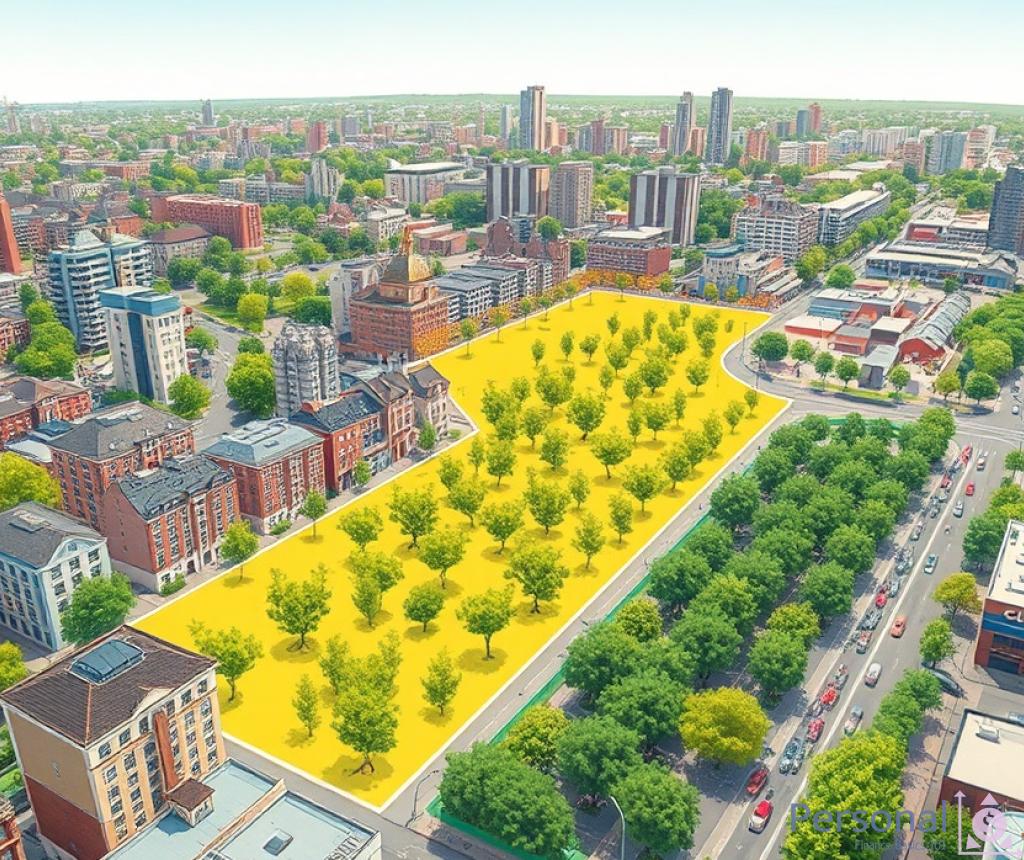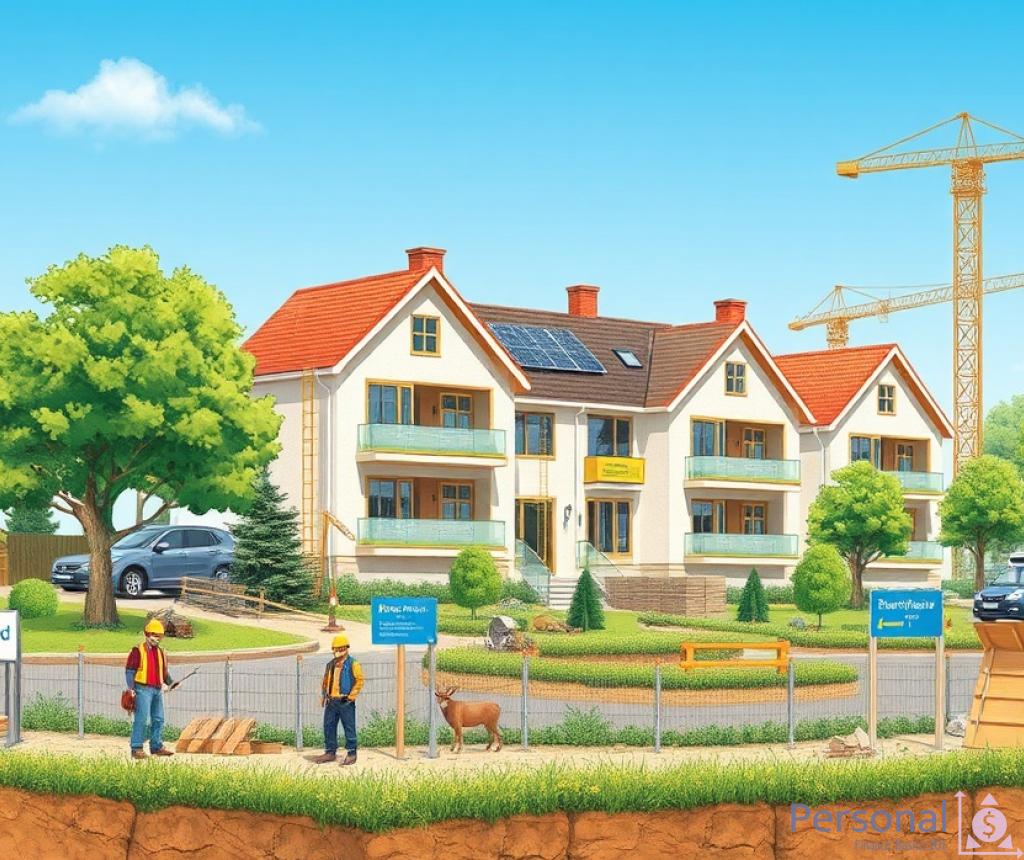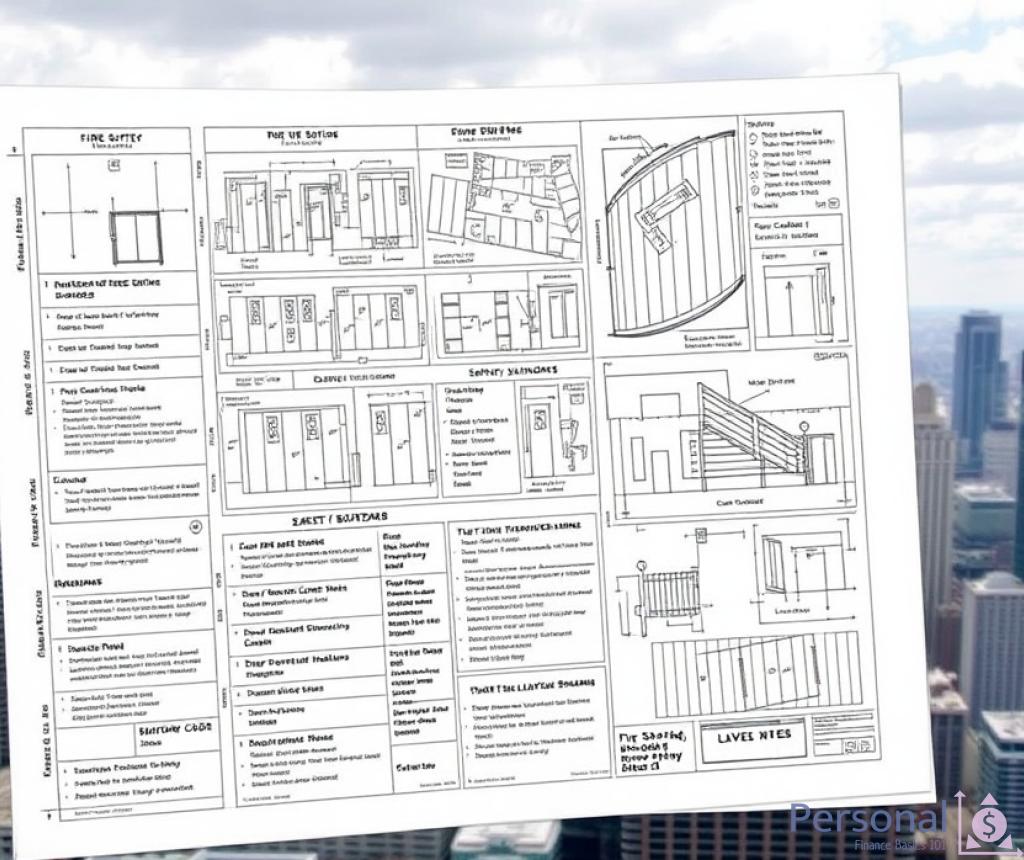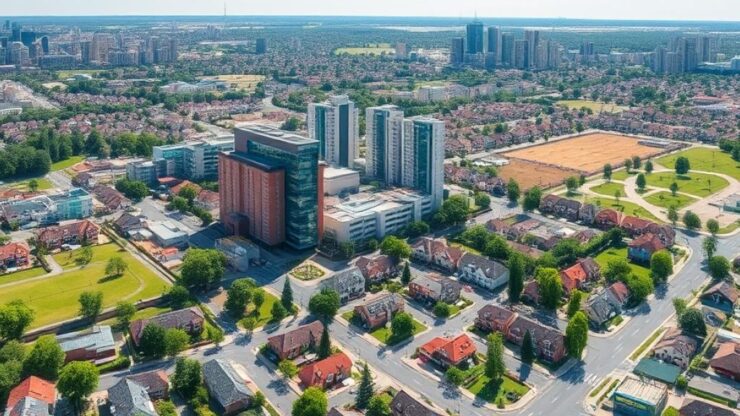Zoning Laws and Their Impact on Development

Zoning laws serve as the backbone of urban planning and development. These regulations are established by local governments to control land use and ensure organized growth in a community. Understanding how these laws function is essential for developers, property owners, and residents alike, as they dictate the type of structures that can be built, where they can be located, and how they can be utilized.
Different types of zoning classifications are designed to maintain the character of neighborhoods while accommodating growth. The most common categories include residential, commercial, industrial, and agricultural zoning. Each classification has specific guidelines that affect property development, ensuring that the intended use aligns with community standards.
- Residential Zoning: Regulates housing development, including single-family homes, apartments, and multi-family dwellings.
- Commercial Zoning: Allows for businesses and retail establishments, with restrictions often placed on hours of operation and signage.
- Industrial Zoning: Designated for manufacturing and distribution centers, often located away from residential areas to minimize noise and traffic concerns.
- Agricultural Zoning: Protects farmland and promotes agricultural activities, often restricting non-farming developments.
Each zoning category has implications for property values, investment opportunities, and community dynamics. Understanding these nuances is crucial for stakeholders involved in property development.
While zoning laws provide structure, they can also create challenges for developers looking to innovate or expand. Striking a balance between community needs and development goals is essential. Zoning amendments and variances may be sought to allow for more flexibility in land use. However, these processes can be lengthy and require significant public input.
As communities evolve, so too must their zoning regulations. The trends toward mixed-use developments and sustainable practices are prompting many municipalities to reconsider their zoning frameworks, fostering a more integrated approach to land use.
Environmental Regulations in Property Development

As cities continue to grow and evolve, the intersection of property development and environmental regulations becomes increasingly significant. Developers must not only be mindful of zoning laws but also navigate a complex landscape of environmental guidelines designed to protect natural resources and public health. These regulations play a crucial role in shaping the planning and execution of construction projects, ensuring that development is carried out responsibly and sustainably.
Environmental regulations are established to safeguard ecosystems, manage natural habitats, and control pollution. Key components often include wetland protection, air quality standards, and stormwater management practices. Developers must conduct thorough assessments to identify potential environmental impacts before proceeding with a project. In many cases, this involves comprehensive environmental impact statements (EIS) that evaluate how a proposed development may affect local flora and fauna, water quality, and soil health.
In addition to assessments, developers may be required to implement specific mitigation strategies. For instance, if a project threatens a wetland, developers might need to create or restore equivalent wetlands elsewhere. Such measures not only comply with regulations but also enhance the overall ecological balance of the area.
Engagement with local communities and stakeholders is a vital aspect of property development under environmental regulations. Public hearings and comment periods allow residents to voice concerns and provide input on proposed developments. This participatory process ensures that the community’s values and needs are considered, fostering transparency and trust between developers and residents.
Moreover, developers who actively involve the community in their projects often enjoy a smoother approval process. By addressing public concerns and aligning development goals with community interests, they can mitigate opposition and enhance project viability. Successful engagement can also lead to innovative solutions that benefit both the environment and the community, such as incorporating green spaces and sustainable design elements into new developments.
| Regulation Type | Key Focus | Example Requirements |
|---|---|---|
| Wetland Protection | Preservation of aquatic habitats | Wetland delineation, mitigation plans |
| Air Quality Standards | Reduction of pollutants | Emission controls, monitoring plans |
| Stormwater Management | Control of runoff and erosion | Retention basins, permeable surfaces |
Building Codes and Safety Standards

In the complex landscape of property development, building codes and safety standards serve as critical frameworks that ensure the integrity and safety of structures within a community. These regulations are established at various governmental levels—local, state, and federal—to protect public health, safety, and welfare. For developers, understanding these codes is not merely a regulatory hurdle but a pathway to creating safe, sustainable, and functional spaces that enhance community well-being.
Building codes are a set of standards that dictate the minimum acceptable level of safety for constructed facilities. They encompass various aspects, including structural integrity, fire safety, accessibility, and energy efficiency. Each code aims to mitigate risks associated with construction failures, fires, and other hazards that could compromise the safety of occupants and the public.
These codes are regularly updated to reflect advancements in technology and changes in societal needs. Developers must stay informed about these updates to ensure compliance, as failure to adhere to building codes can result in costly penalties, project delays, and even litigation.
While building codes provide the framework for safe construction, safety standards delve deeper into specific requirements for various building components and systems. These standards often address electrical systems, plumbing, HVAC (heating, ventilation, and air conditioning), and fire safety measures, among others. Adhering to these standards not only ensures compliance but also enhances the durability and functionality of the building.
For instance, the National Fire Protection Association (NFPA) sets stringent fire safety standards that dictate materials and designs that can minimize fire risks. Similarly, the International Code Council (ICC) develops codes that focus on energy conservation, which are becoming increasingly vital in the era of sustainable development.
For developers navigating the intricate web of building codes and safety standards, several key considerations can streamline the process:
- Research Local Codes: Always begin by understanding the specific building codes applicable in the project’s location, as they can vary significantly between jurisdictions.
- Engage with Professionals: Collaborate with architects, engineers, and code consultants who possess in-depth knowledge of the relevant codes and can guide the design and construction process.
- Plan for Inspections: Prepare for multiple inspections throughout the development process to ensure compliance at every stage, reducing the risk of costly rework.
By adhering to building codes and safety standards, developers not only protect themselves from legal repercussions but also contribute to the creation of safe and resilient communities. As urban landscapes continue to evolve, understanding and implementing these regulations will remain a cornerstone of successful property development.
Historical Preservation and Development Constraints
As cities evolve and grow, the tension between development and historical preservation becomes increasingly pronounced. Historical preservation regulations are designed to safeguard structures and places that hold significant cultural, architectural, or historical value. These regulations often impose strict limitations on property development, creating a complex landscape that developers must navigate. Understanding these constraints is essential for anyone involved in property development, as they can profoundly influence project timelines, costs, and overall feasibility.
Historical preservation serves several vital functions within a community. It not only protects the tangible aspects of a city’s heritage but also contributes to a sense of identity and continuity for its residents. By maintaining historical sites, communities can foster tourism, enhance property values, and promote local pride. However, these efforts often come with a set of restrictions that developers must consider when planning new projects.
Developers need to be aware of various constraints imposed by historical preservation regulations, which can include:
- Design Restrictions: New constructions or renovations may need to adhere to specific design guidelines that maintain the historical aesthetic of the neighborhood.
- Material Limitations: Certain materials may be mandated to ensure that any new development is in harmony with the existing historical context.
- Review Processes: Projects may require extensive reviews and approvals from local preservation boards or commissions, which can prolong timelines and increase costs.
- Adaptive Reuse Requirements: Developers may be encouraged or required to incorporate existing structures into new projects, demanding innovative approaches to design.
By understanding and anticipating these constraints, developers can better prepare for the challenges they may face when attempting to integrate new projects with the historical fabric of the community.
To successfully navigate the complexities of historical preservation, developers can adopt several strategies:
- Engage Early with Preservation Authorities: Initiating discussions with local preservation boards at the onset of a project can help identify potential challenges and streamline the approval process.
- Conduct Thorough Research: Understanding the historical significance of the area and existing regulations can provide insight into acceptable design approaches and materials.
- Incorporate Community Input: Engaging with local residents and stakeholders can foster goodwill and create opportunities for collaboration, ultimately leading to more successful projects.
By adopting a proactive approach, developers can ensure that their projects respect and enhance the historical character of the community while meeting modern needs. This delicate balance is essential for fostering sustainable urban growth that honors the past while embracing the future.
Community Engagement in Land Use Planning
In the realm of land use planning, the significance of community engagement cannot be overstated. As urban landscapes evolve, the active involvement of residents in the decision-making process becomes imperative to ensure that development aligns with the values and aspirations of the community. This collaborative approach not only enhances transparency but also fosters a sense of ownership among stakeholders, leading to more sustainable and accepted outcomes.
Effective community engagement can take various forms, including public meetings, surveys, and workshops. Each method presents an opportunity for residents to express their needs, concerns, and visions for their neighborhoods. By actively listening to the community, planners and developers can identify potential conflicts early in the process, allowing for adjustments that reflect public sentiment and mitigate opposition.
One of the primary challenges in land use planning is the often perceived disconnect between developers and the communities they serve. Developers may focus on financial feasibility and timelines, while residents prioritize the long-term implications of development on their quality of life. To bridge this gap, it is essential for developers to engage with community members from the outset, seeking input and fostering dialogue about proposed projects.
Utilizing visual aids, such as site plans and renderings, can help demystify the development process and provide residents with a clearer understanding of what to expect. Furthermore, transparent communication regarding the potential benefits of development—such as economic growth, employment opportunities, and improved infrastructure—can alleviate fears and build trust within the community.
| Engagement Method | Description | Benefits |
|---|---|---|
| Public Meetings | Gathering where residents can learn about projects and provide feedback. | Fosters transparency and builds community trust. |
| Surveys | Structured questionnaires to gather community opinions. | Allows for broader input and quantitative data collection. |
| Workshops | Interactive sessions to discuss project designs and alternatives. | Encourages collaboration and creative problem-solving. |
Education plays a pivotal role in effective community engagement. By providing residents with information about zoning regulations, development processes, and potential impacts, communities can better articulate their preferences and advocate for their interests. Empowering residents with knowledge helps demystify the planning process and equips them to engage meaningfully with decision-makers.
Moreover, establishing a consistent feedback loop is essential. Developers should not only solicit input but also demonstrate how community feedback has influenced project outcomes. This acknowledgment fosters a collaborative spirit and encourages ongoing participation, ultimately leading to more resilient and vibrant neighborhoods.
Disclaimer
This article has been created or edited with the support of artificial intelligence and is for informational purposes only. The information provided should not be considered investment advice. Please seek the support of a professional advisor before making any investment decisions.






